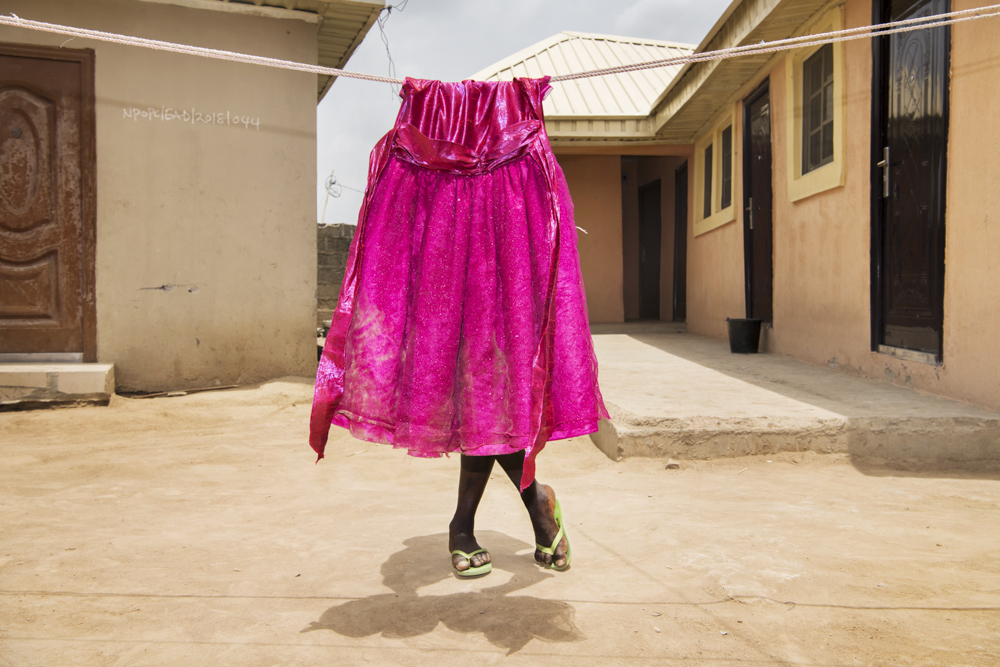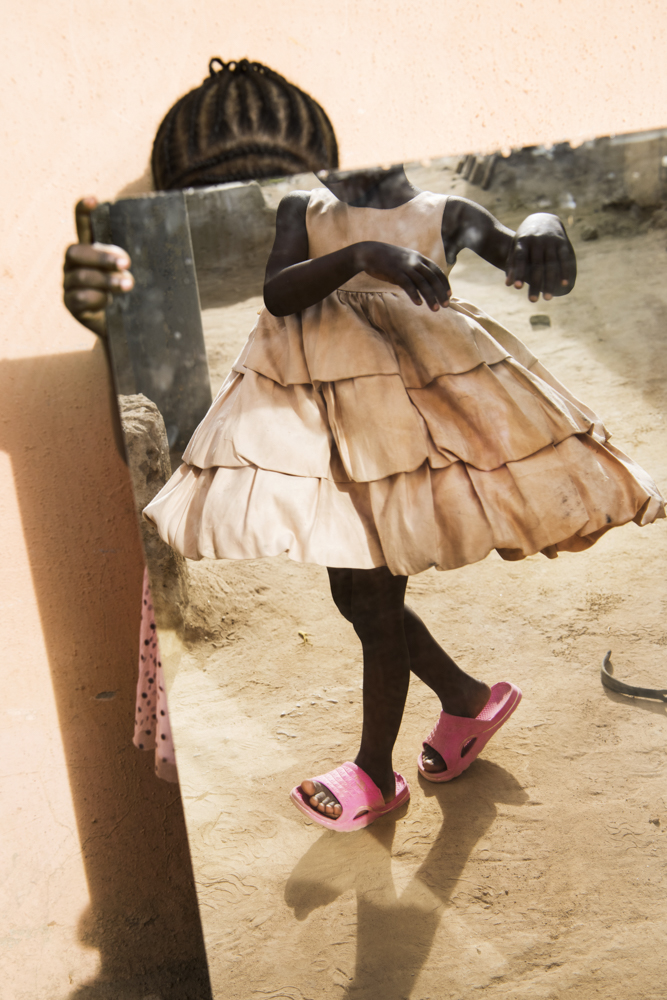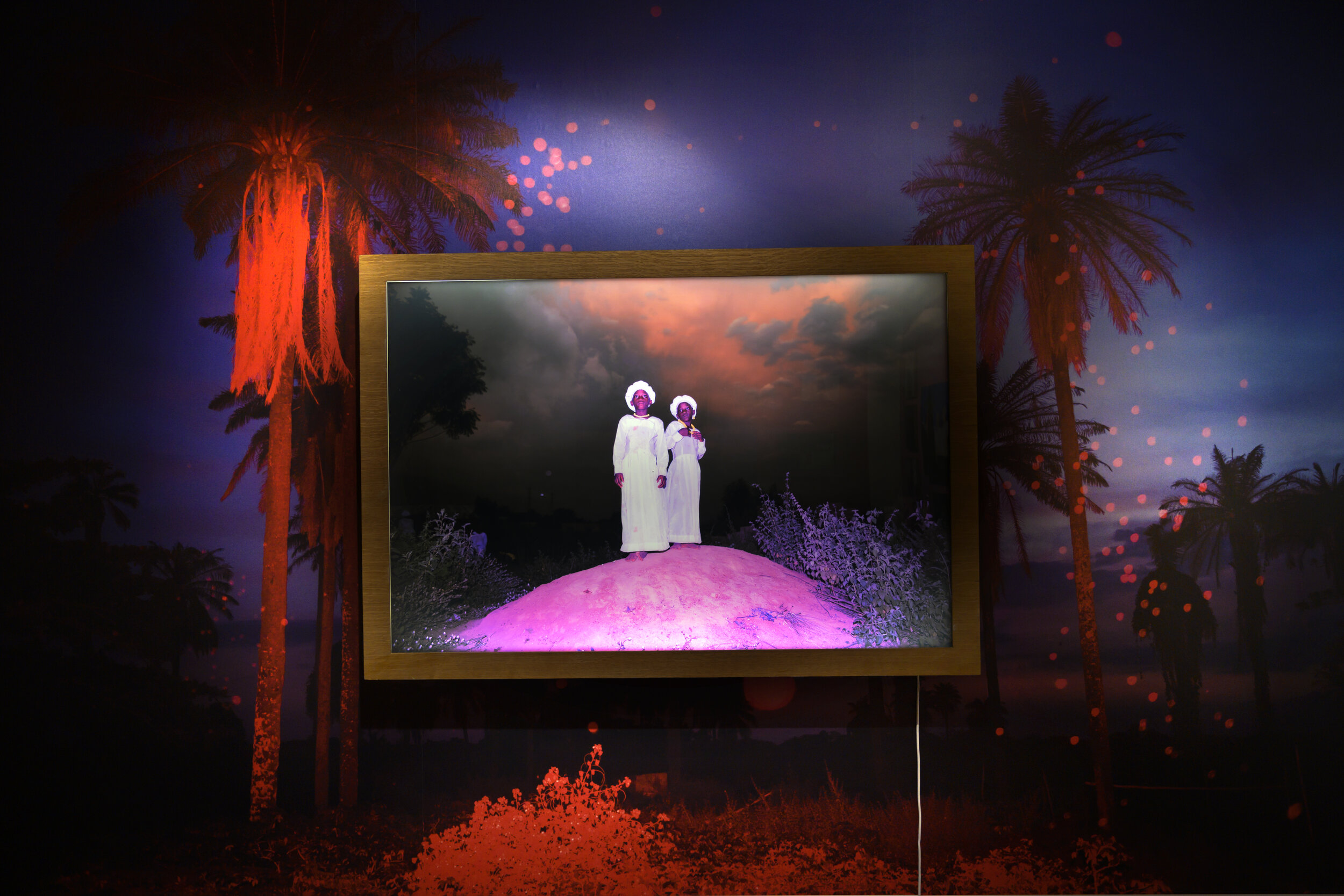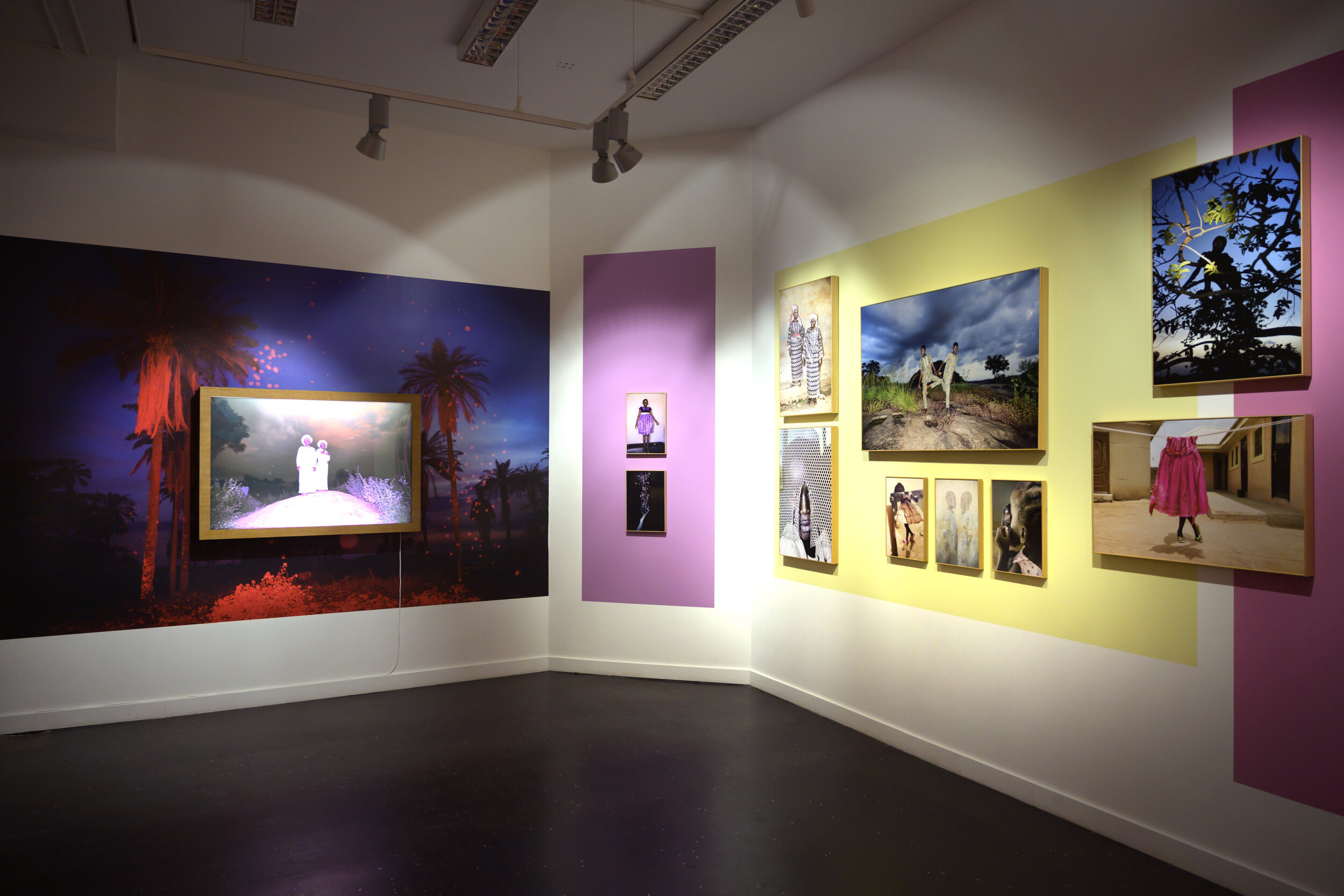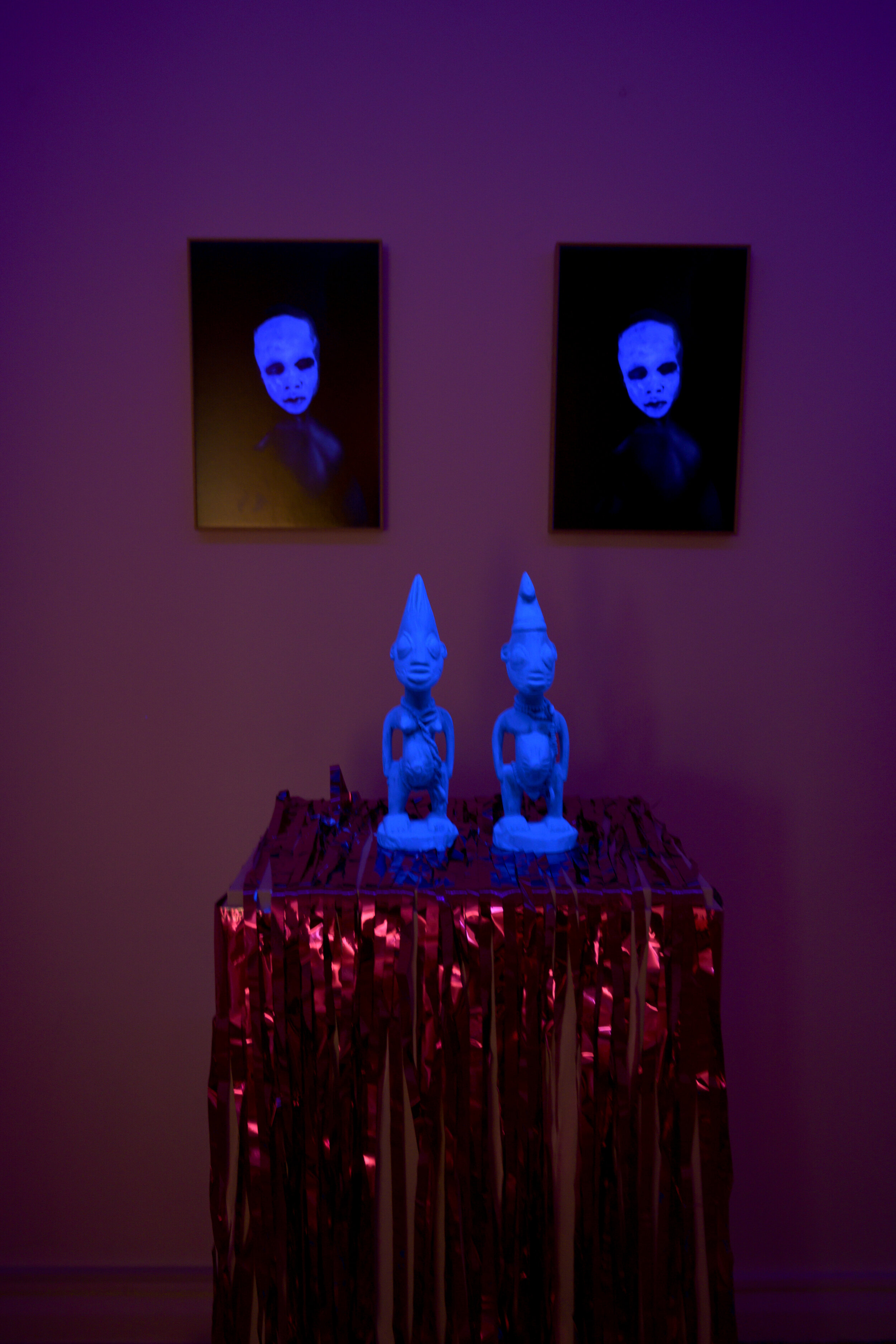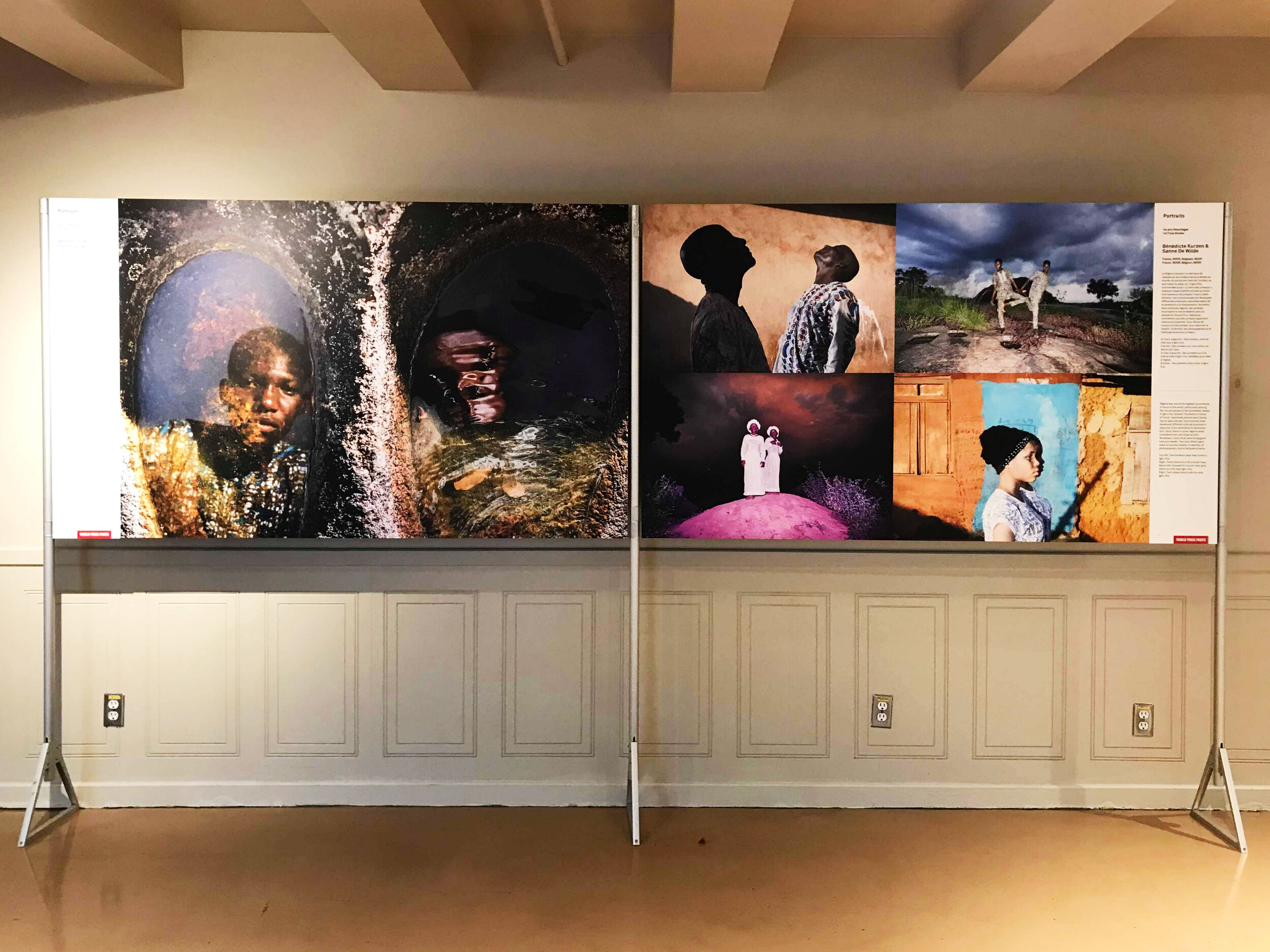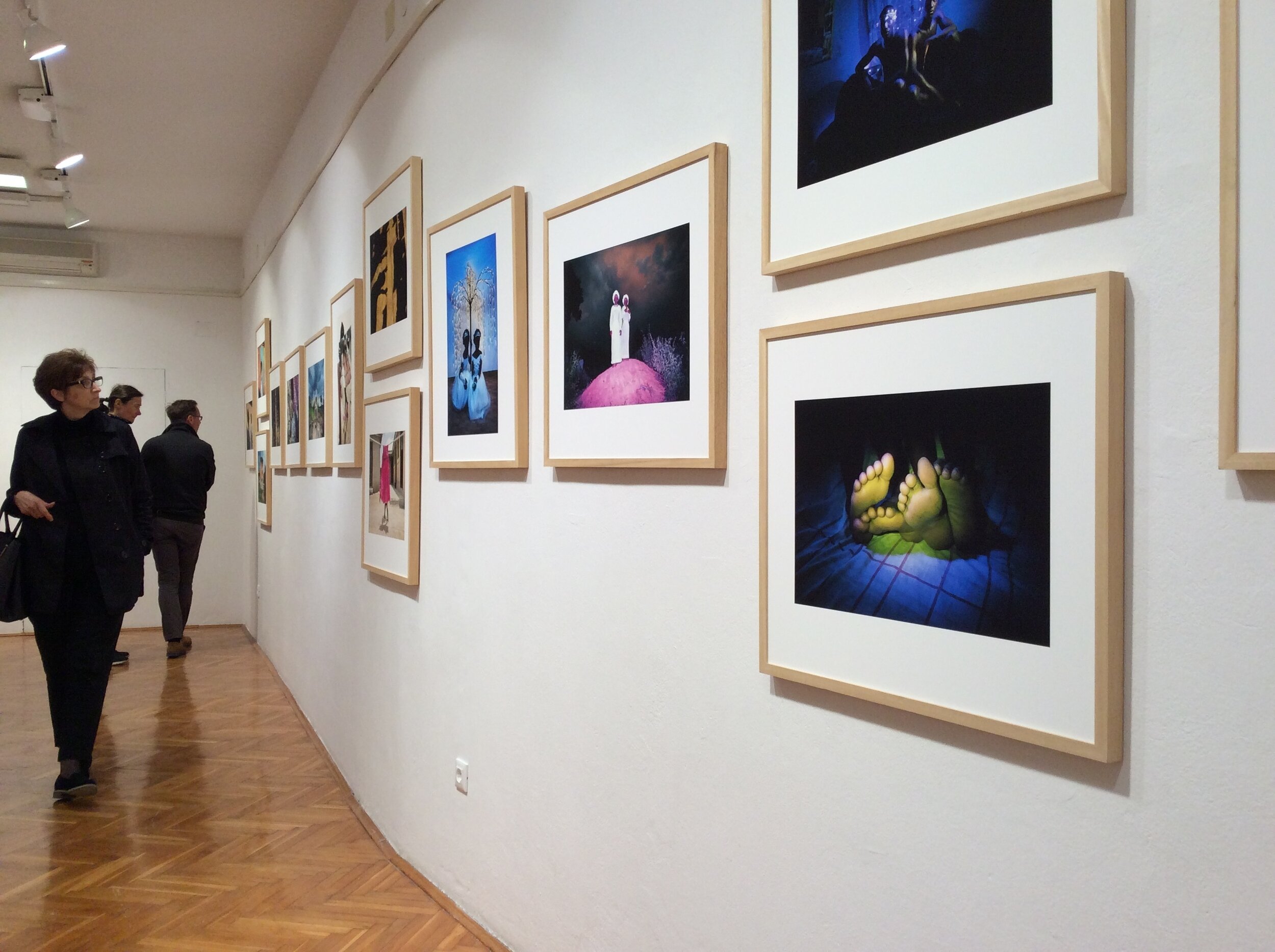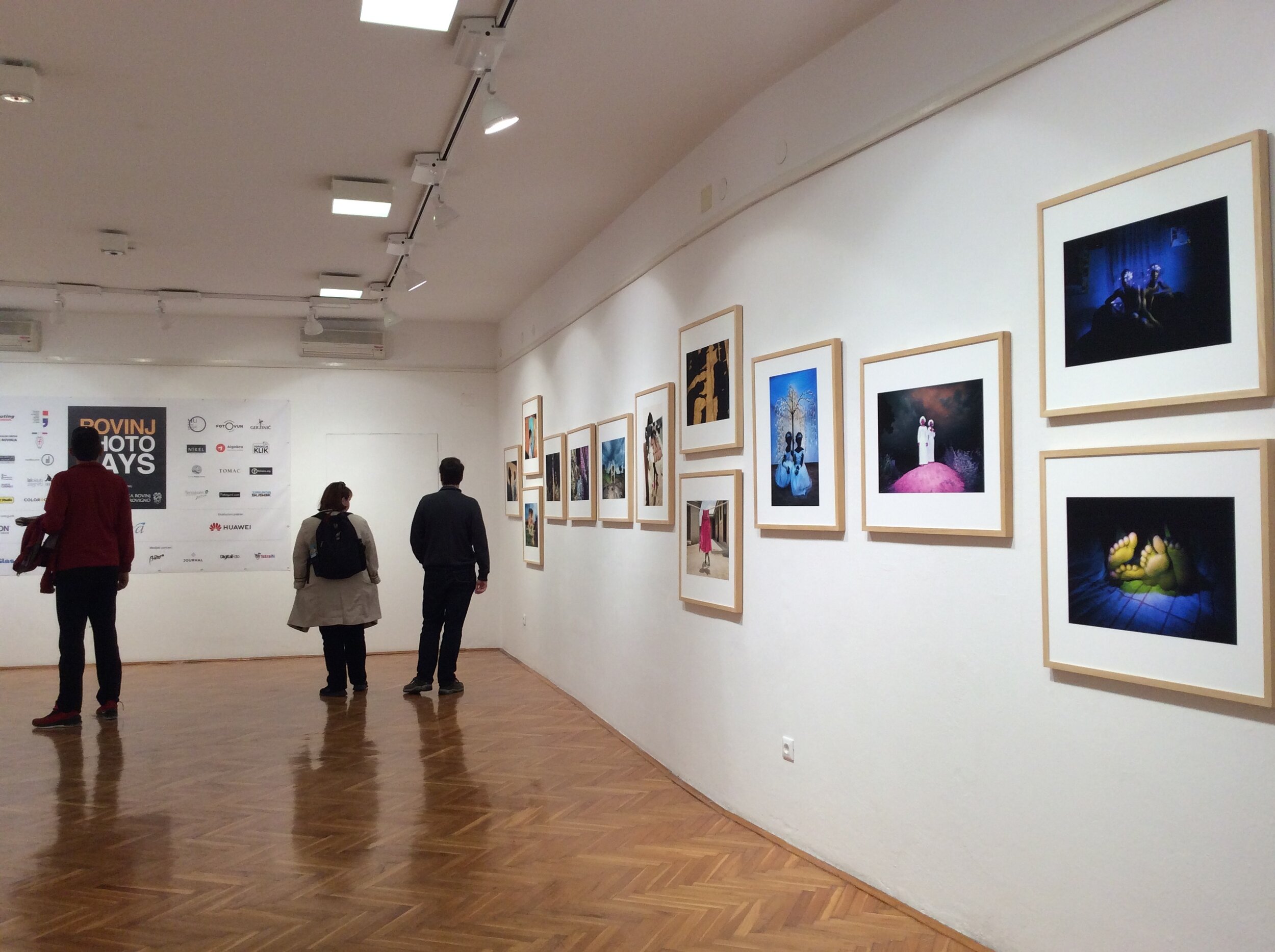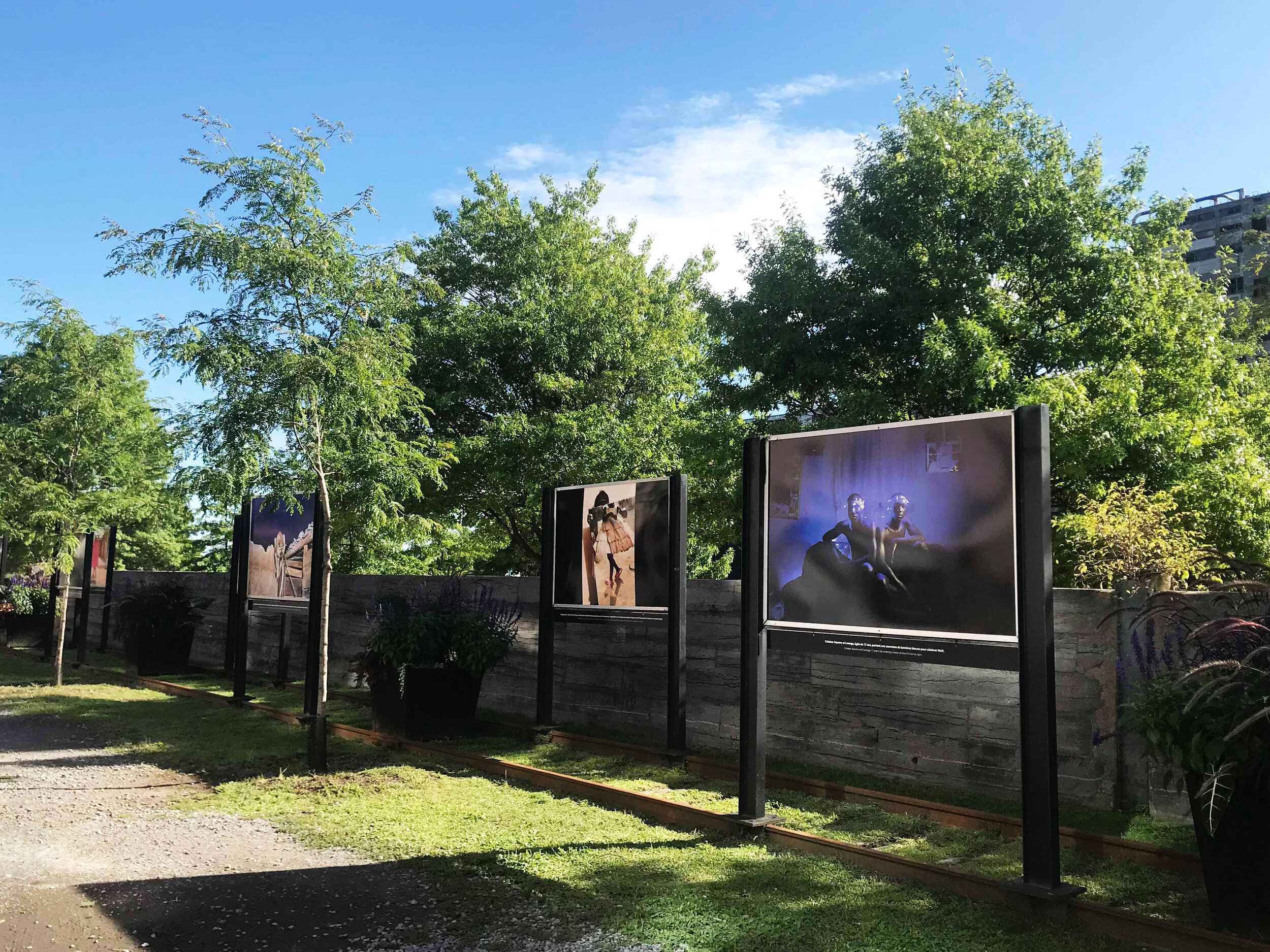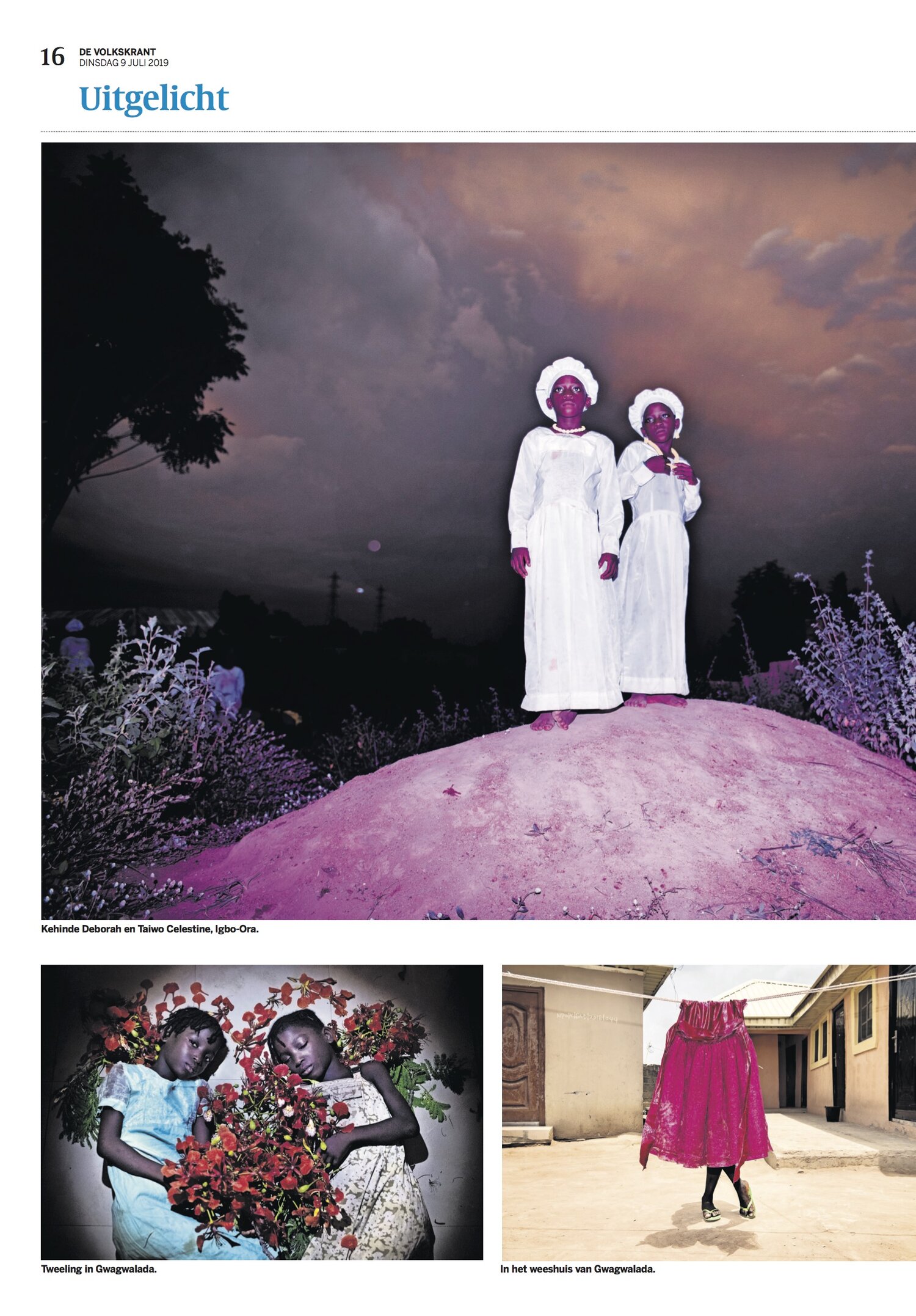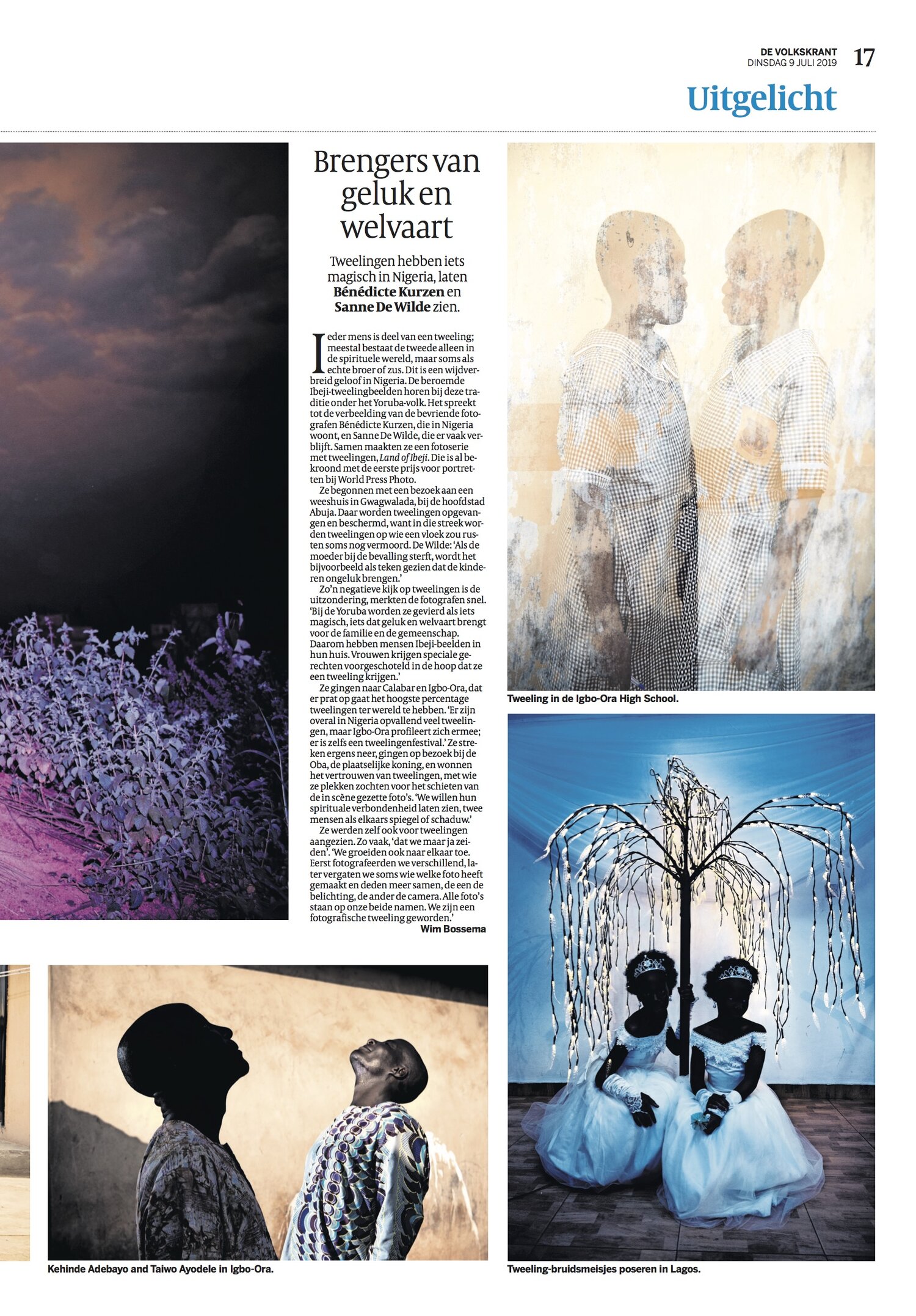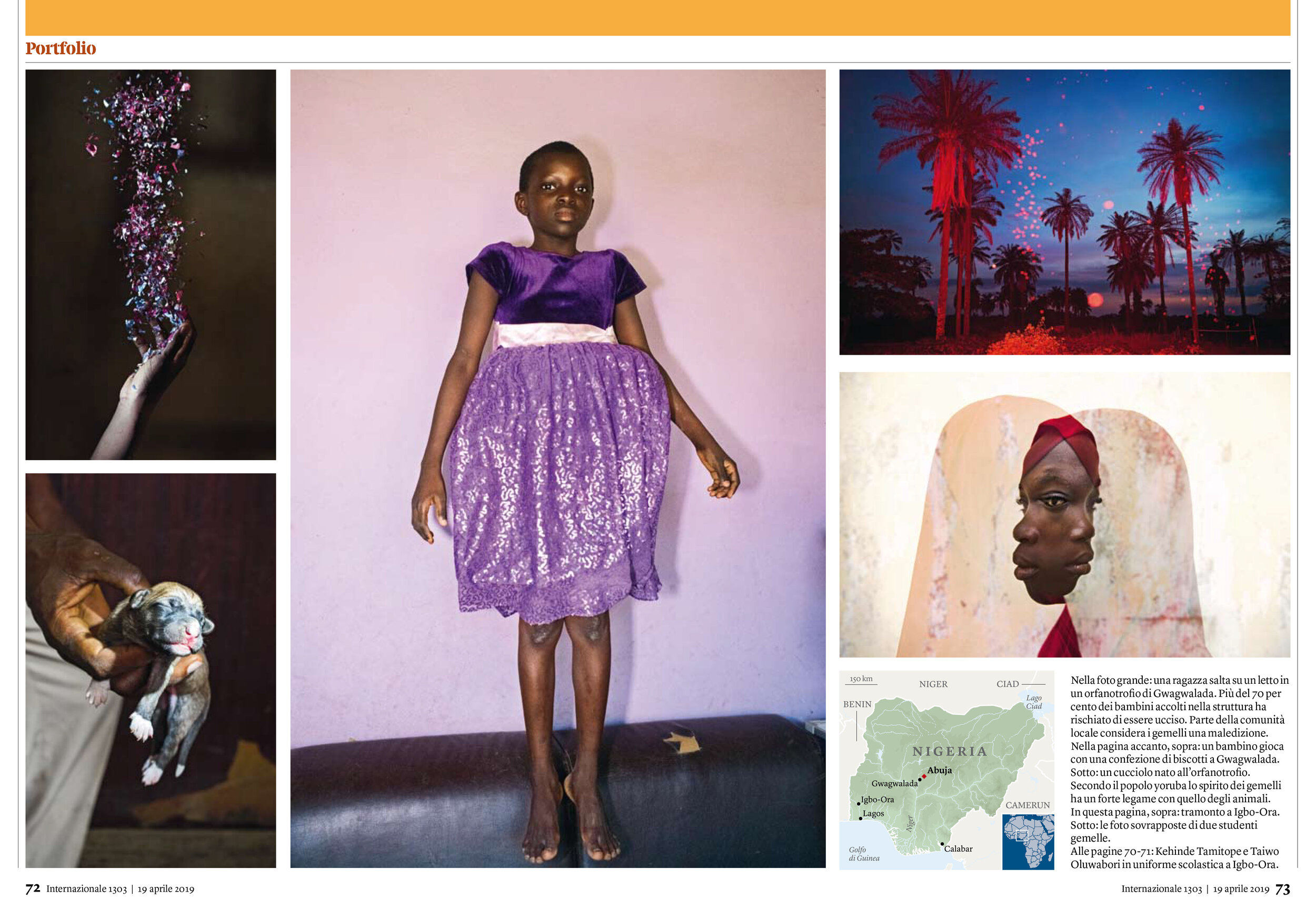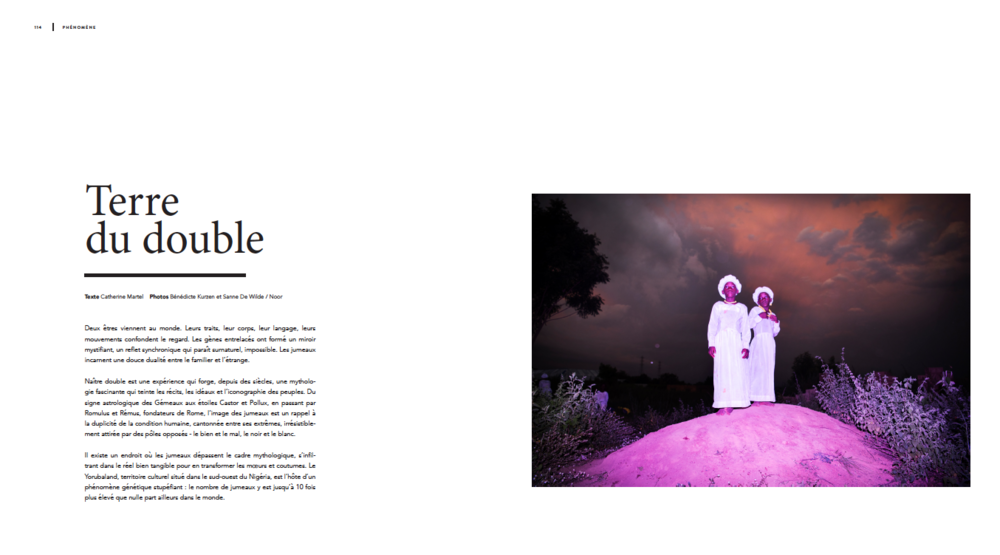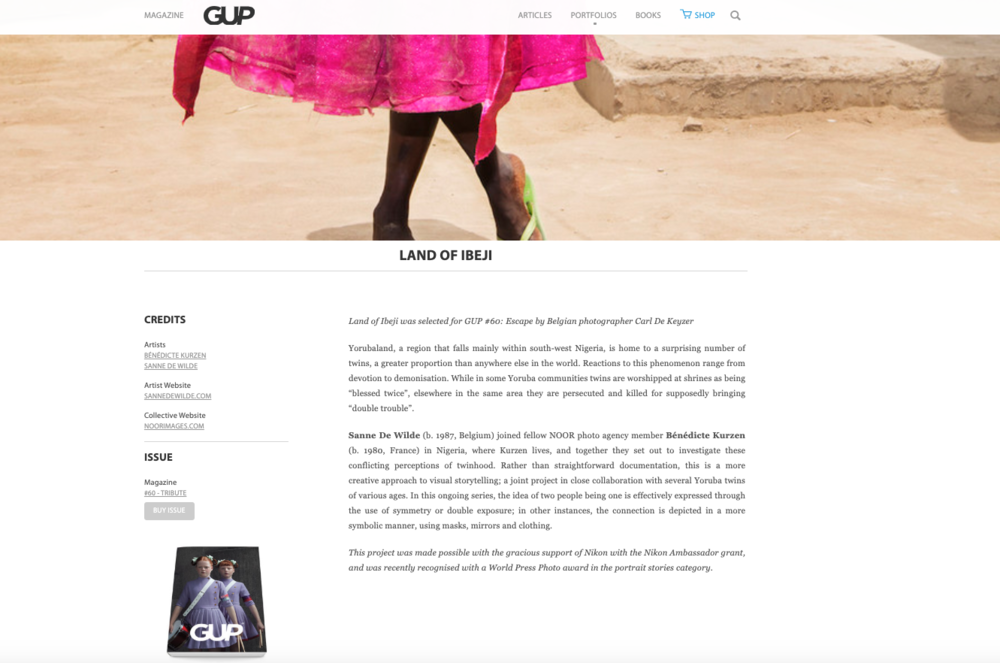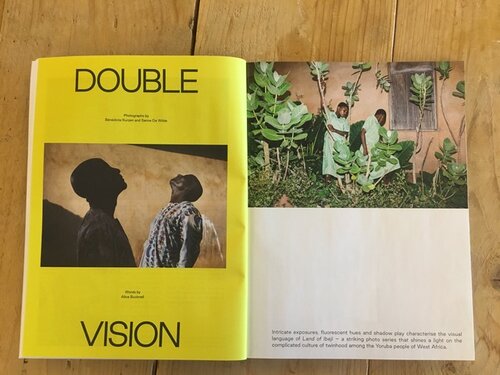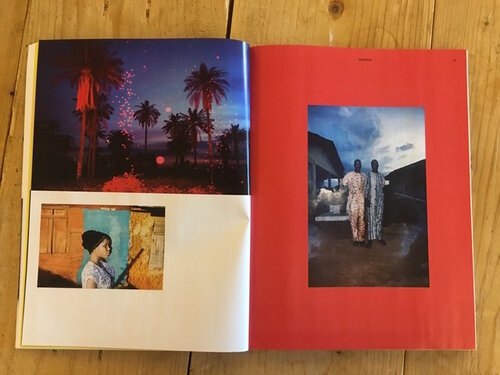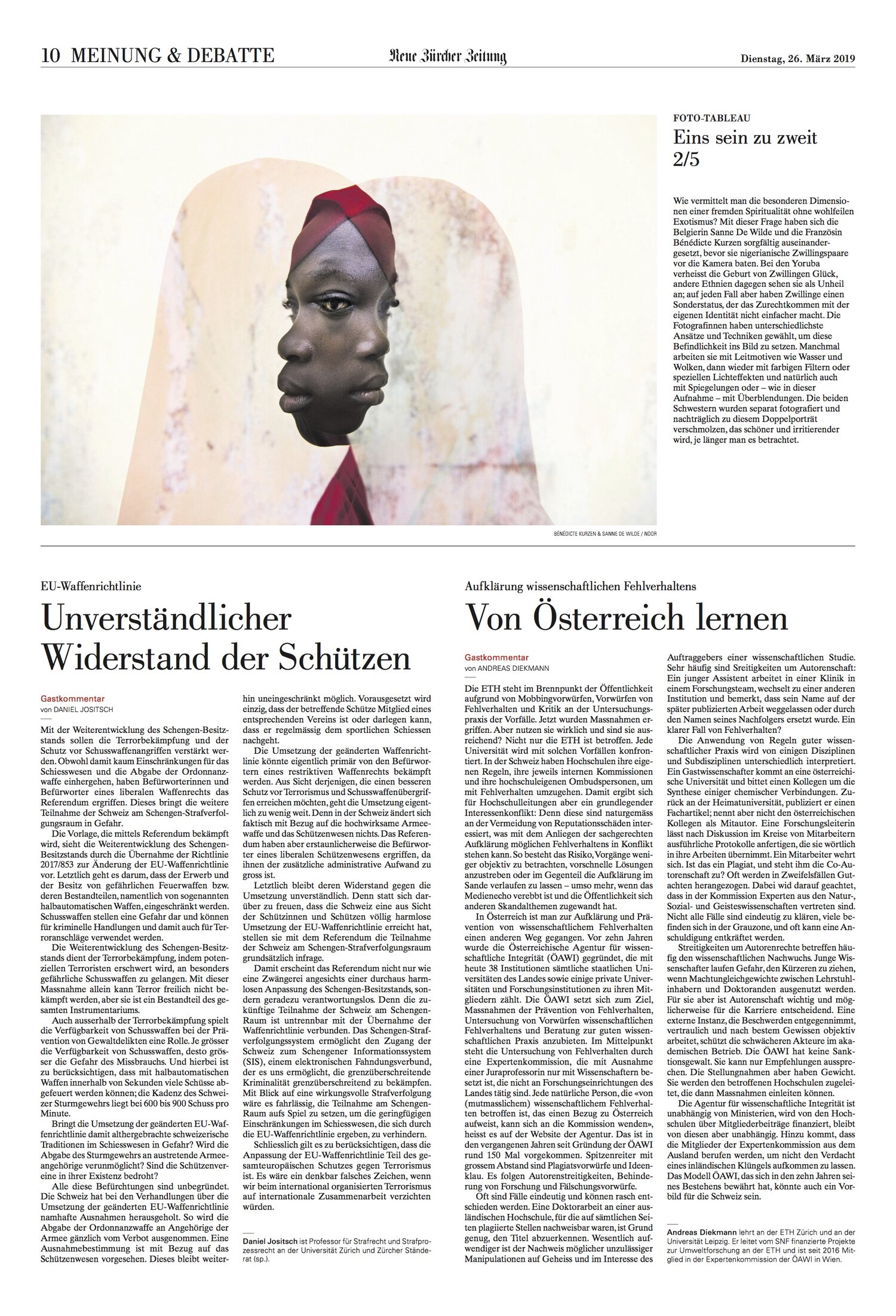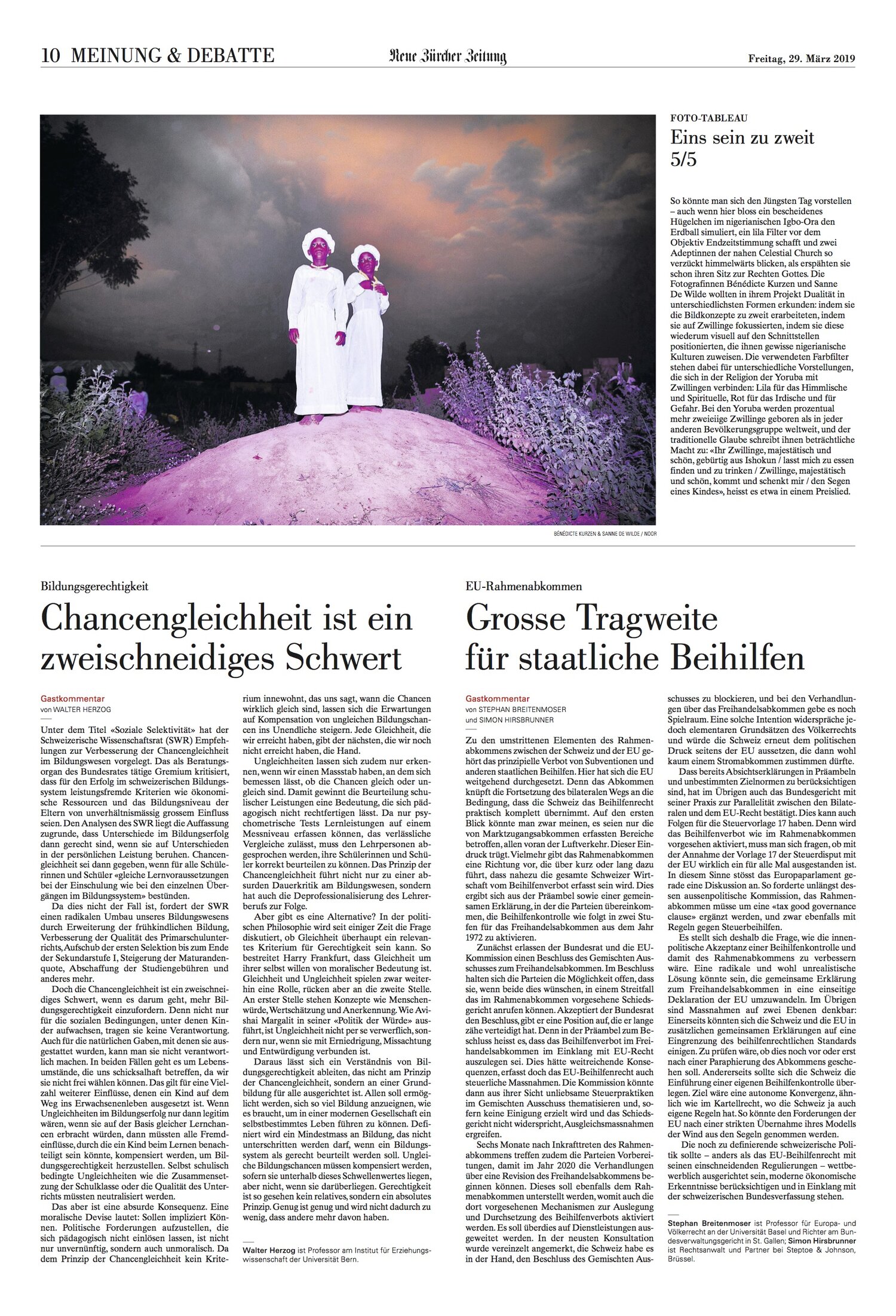LAND OF IBEJI
By Bénédicte Kurzen and Sanne De Wilde
About | Geography | RECOGNITIONS | EXHIBITIONS | DISSEMINATION | PUBLICATIONS | BIOGRAPHIES | MORE WORK
‘Land of Ibeji’ is a collaborative photographic project discovering the mythology of twinhood in Nigeria“Ibeji” meaning 'double birth' and ‘the inseparable two’ in Yoruba stands for the ultimate harmony between two people, the rate of twin births in West Africa is about four times higher than in the rest of the world. The centre of this twin zone is Igbo-Ora, a sleepy southwest town in Nigeria. Through a visual narrative and an aesthetic language that is meant to reflect and empower the Yoruba culture that celebrates twins, the two photographers extend their gaze beyond appearance - with symmetry and resemblance as tools- to open the eyes to the twin as a mythological figure and a powerful metaphor: for the duality within a human being and the duality we experience in the world that surrounds us.
Communities have developed cultural practices in response to this high twin birth rate that vary from veneration to demonisation. In some areas, shrines are built to worship the spirit of the twin and celebrations are held in their honour. In others, twins are vilified and persecuted for their perceived role in bringing bad luck in particular to rural communities. In Yoruba beliefs each human has a spiritual counterpart, an unborn spirit double. In the case of twins the spiritual double has been born on earth. The friction, between communities celebrating twins and rejecting them, lies in perception of the twin as an extremely powerful spirit. Some see it as threat and as something that cannot remain on earth and has to be sent back to the heavens where it normally resides.
To highlight the ‘magical’ and ‘supernatural’, to visualise that what cannot be seen; 2 colour filters were used in certain pictures, amplifying the duality of two photographers, two individuals, two identities; two perceptions coloured differently. Colours symbolising contradictory beliefs: purple for the spiritual and heavenly and red for the earthly, danger. Layers of portraiture, double exposure, landscape and still life come together as visual narrative translating the mythology of twin hood. The photographers are using various genres with duality as a key theme: the metaphor and the literal, the visible and the invisible, the material and the spiritual.
There is a vast fascination for twins around the world. Although many of the myths and stories about twin-hood have faded or been forgotten it is a recurring theme weaving through biblical and cultural storytelling, philosophy and even science. Think of the Gemini stars Castor and Pollux, Romulus and Remus creating Rome and Plato articulating the double nature of humanity. Folklorist Alan Dundes defines myth as a sacred narrative that explains how the world and humanity evolved into their present form. Dundes classified a sacred narrative as "a story that serves to define the fundamental worldview of a culture by explaining aspects of the natural world and delineating the psychological and social practices and ideals of a society”. The mythology of twin-hood becomes a way to address themes like identity, genetics, demographics, economy, religion and environmental issues.
GEOGRAPHY
The photographers visited three locations, each of which weaves in a new thread to the visual narrative. From an orphanage in Gwagwalada (an area where twin killings still take place) to Igbo Ora and Calabar (where twins are glorified).
GWAGWALADA
The first destination was the Vine Heritage Home Foundation, an orphanage situated in Gwagwalada, one hour drive from the federal capital, Abuja. Two missionaries created a shelter for children whose life was in danger because of the practice of infanticide performed by the neighbouring Bassa communities. If a mother dies during child birth or while nursing a baby, the baby is considered evil and must therefore be buried (alive) with the deceased mother. The belief that twins (multiple births) are an abomination makes them suffer a similar fate. The infanticide being real and reoccurring, yet an isolated practice, is not fit to be representational of what twin-hood means in Nigeria today.
The focus shifts to the other end of the spectrum in Igbo Ora and Calabar, where twins are venerated and celebrated as a symbol of fertility, good luck and abundance.
IGBO-ORA
The self-proclaimed 'Twin Capital of the World’ has earned its nickname by the unusually large number of twin births in the region. Almost each household has twins and twins are seen as a token for good luck, good health and wealth. The cause of this twin density remains mysterious. Although no direct relation between dietary intake and twin births has been proven, a research study carried out by the University of Lagos Teaching Hospital has suggested that a chemical found in the women in the region of Igbo Ora and the peelings of the widely consumed tuber (yams) could be causing twins births. Local people attribute it to a special dish called ‘Ilasa’ a soup that is said to be the secret (ingredient) to having twins. Some others speak about the quality of the water. Another possible explanation is genetics.
The first edition of the ‘Twin Festival’ was held in Igbo Ora in November 2018, gathering over 2000 twins, according to the local authorities.
CALABAR
Destination number three, is the glue that holds Igbo Ora and Gwagwalada together. In 1876, Mary Slessor, a Scottish Presbyterian missionary, set foot in West Africa. She is well known for having stopped the practice of infanticide of twins among the Ibibio people, an ethnic group in southeastern Nigeria. She was able to shift the perception from negative to positive. Calabar is now named 'Home of Twins' by the twin foundation also known as the 'Mary Slessor Twin Club’ uniting twins all over Cross River State. Mary Slessor is honoured by a statue on one of the main roundabouts in the city where she is depicted holding twins in her arms.
TAIWO and KEHINDE
The firstborn of the twins is known as Taiwo while the second one is called Kehinde. In Yoruba culture the second born twin is considered the elder twin; Taiwo is sent out by Kehinde first to judge if the world is safe and beautiful. Taiwo means "the first twin to taste the world.” Kehinde means "the second-born of the twins".
““We believe ‘Ibeji’ (twins) bring good luck. They represent fertility and bring love, they are a blessing to the family. Once you have twins, people believe that more and more of everything will come to you. Twins are also related to the monkey spirit and more specifically to the Edun monkey. These monkeys always give birth to twins so they are a symbol for the ‘Ibeji’.’’”
Benedicte Kurzen and Sanne De Wilde were awarded 1st prize of the World Press Photo Contest, Portrait series with their collaborative photographic project Land of Ibeji discovering the mythology of twinhood in Nigeria.
This work was made thanks to Nikon Europe, NOOR's long time partner in supporting our storytellers in creating impactful stories, as well partner in our education program. Benedicte Kurzen and Sanne De Wilde explore what it’s like being a twin in contemporary Nigeria by answering questions about their project.
“Wende’s Kaleidoscoop brings together artists and audiences from all corners of the world in Carré during a dazzling mix of music, singing, acting and images.”
Sanne De Wilde (Belgium, 1987) explores the medium of photography and effectuates this in regards to subjects related to the role genetics, identity and perception play in people's lives and how this shapes and affects communities and makes people vulnerable in the eye of society.
She graduated with a Master in the Fine Arts at KASK in Ghent (BE) with great honours in 2012. Her photo series 'The Dwarf Empire' was rewarded with the Photo Academy Award 2012 as well as the International Photography Award Emergentes DST in 2013. Her serie ‘Snow White’ was awarded 16ème Prix National Photographie Ouverte and NuWork Award for Photographic Excellence. She was awarded the Nikon Press Award in 2014 and 2016 for most promising young photographer. The British Journal of Photography selected De Wilde as one of 'the best emerging talents from around the world' in 2014 and she received the Firecracker Grant 2016, PHmuseum Women's Grant and de Zilveren Camera award for 'The Island of the Colorblind'. ‘Land of Ibeji’, her newest project with NOOR-member Bénédicte Kurzen, won the World Press Photo Award, Rovinj Photoaward, CAP Prize, Prix Voies OFF and was nominated for the ZEISS photography award in 2019.
She has been internationally published (Guardian, New Yorker, National Geographic, Le Monde, CNN, Vogue) and exhibited (Voies OFF, Tribeca Film Festival, Circulations, Lagos Photo, Lodz Fotofestiwal, Cortona On the Move, IDFA, STAM and EYE). Since 2013, De Wilde works with the Dutch newspaper and magazine De Volkskrant, in Amsterdam the Netherlands, and joined NOOR in 2017.
She is represented by East Wing Gallery (Doha, Qatar).
Bénédicte Kurzen
Bénédicte Kurzen (France) photographic career began when she moved to Israel in 2003, covering hard news as a freelancer in the Gaza Strip, Iraq and Lebanon.
In 2004, her photography developed from hard news to a more documentary style with her work on the lives of volunteer suicide bombers and widows in the Gaza Strip. Bénédicte contributed with this work to the “Violence Against Women” group project, in collaboration with Amnesty International and Médecins Sans Frontières (MSF).
Bénédicte holds a master’s degree in Contemporary History from the Sorbonne, Paris. She wrote her final essay about the “myth of the war photographer”, which inspired her to become a visual storyteller herself. For the past ten years, Bénédicte has been covering conflicts and socio-economical changes in Africa. In South Africa, where she was based, she explored some of the deepest social challenges of the post-apartheid society producing “Next of Kin”, “The Boers Last Stand” and “Amaqabane”, on the life of former anti-apartheid combatants. The latest was produced for prestigious World Press Joop Swart Masterclass 2008.
In 2011, she received a grant from the Pulitzer Center, which allowed her to produce a body of work on Nigeria, “A Nation Lost to Gods”. Her work has been screened and exhibited at Visa pour l’Image and was nominated for the Visa d’Or in 2012. After becoming a NOOR full member in 2012, she decided to move to Lagos, from where she could pursue her coverage of Africa, with a focus on Nigeria.
This resulted in 2015 in the exhibition “Shine Ur Eye” with Robin Maddock and Crisitina de Middel, which travelled from Photo London to Lagos Photo Festival and more places. Alongside, she became an adjunct lecturer at the American University of Nigeria in journalism.
She won a World Press Photo for her collaborative project with NOOR Photographer Sanne De Wilde for "Land of Ibeji" in 2019.
A book will be published by Hannibal & Hatje Cantz by June 2019.



